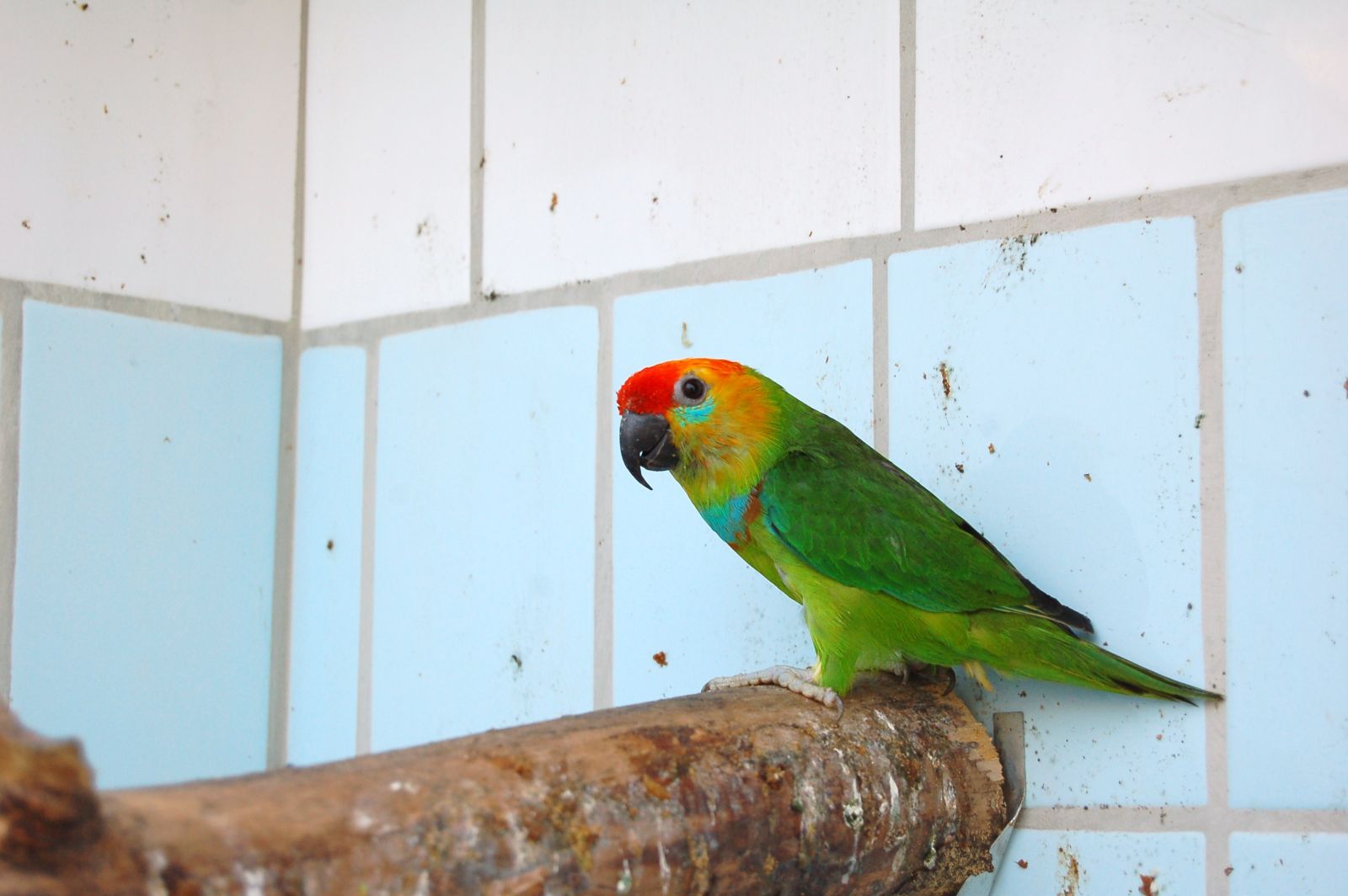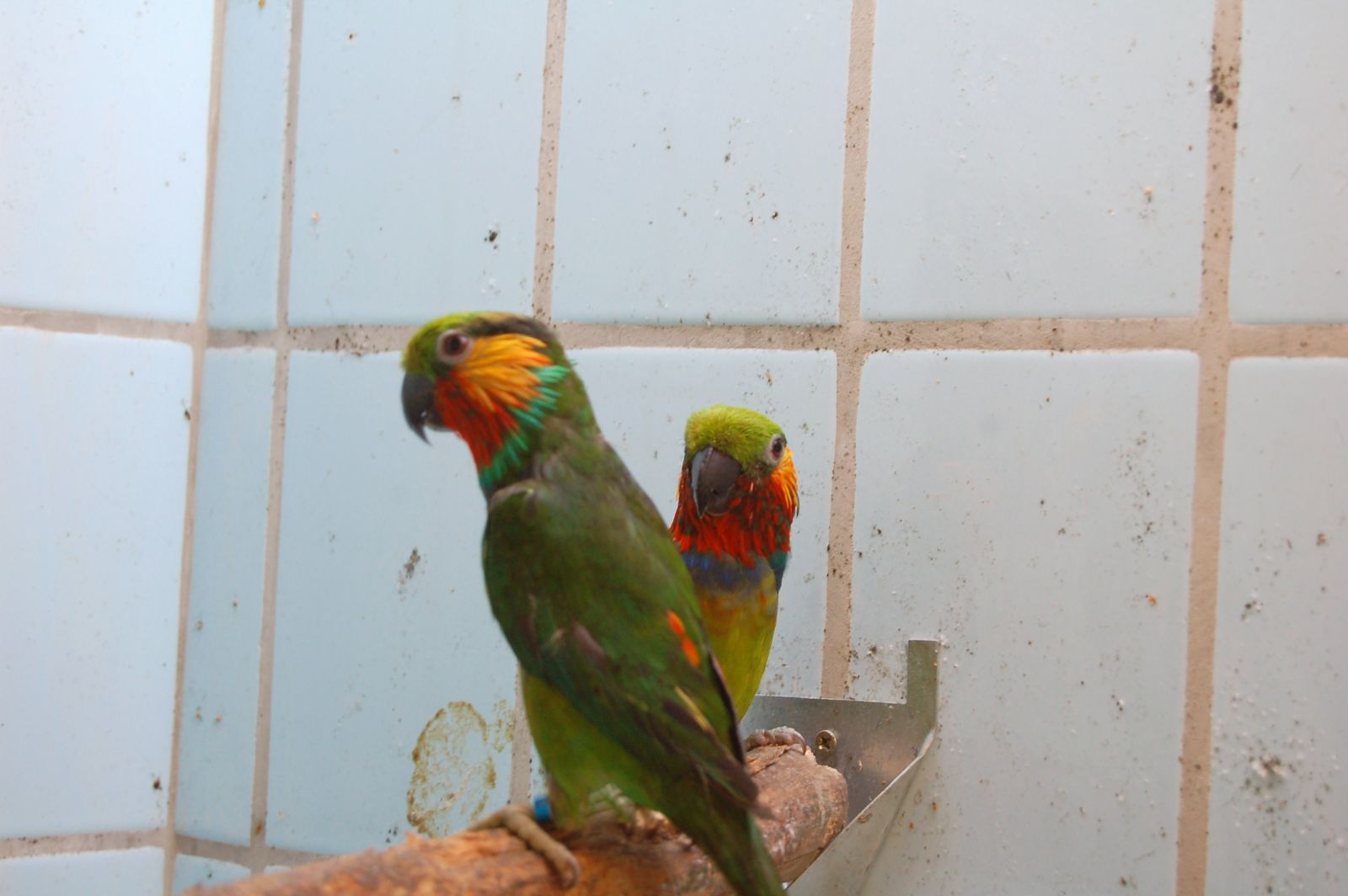My fig parrots are not picky eaters. They will sample most anything that is put in their bowl. I received a lot of information from different breeders all round the world and thought to share it with everyone, because this kind of information is very difficult to find. Especially in books. So here are different diets offered by me and other breeders. If you keep fig parrots and like to have add your diet here please send me your diet through email
My Fig parrots Diet:
- fresh water
- mixture of lorifood with honey (eucalyptus) , Pollen (is a fine to coarse powder containing the microgametophytes of seed plants, which produce the male gametes (sperm cells).)and baby food (blended fruit mix)
- 3 soaked figs for 1 pair
- fruit-vegatable mix with Nekton Q
- Mealworms and ant eggs
- fresh branches of fruit trees
- rotten branches of fruit trees
- rosehips
Diet 1:
- Each day 100 ml lorifood liquid with every 2 days vitamine K1
- fruit mix with nekton Q
- 1 fig for each bird and mealworms
- Orlux eggfood
Diet 2:
Today, the Psittaculirostris species diet consists of the following, which is fed to them twice a day in clean bowls. It is sufficient for approximately ten birds.
- 3 tablespoons of cooked rice.
- 1 medium-sized, cooked potato (cut into pieces).
- 1 large, peeled and steamed apple (with the core removed).
- 1 steamed carrot.
- 1 banana .
- 2 tablespoons Humana Special (powdered special diet for babies, which is free of lactose, fructose and refined sugar)
- 2 tablespoons of soft oat flakes
- 1/4 teaspoon Korvimin (powdered vitamin/mineral supplement for birds)
- 10 ml honey
- 1/2 teaspoon of oil (olive or wheatgerm oil)
- 1/8 lettuce or Chinese cabbage
- Approx. lOO ml water
All of the ingredients are mixed in a blender until they form a paste-like substance.
We also offer a variety of sprouted seeds and pulses, including sunflower seeds, mung beans and a seed mixture intended for pigeons. These are soaked in 5 litres (just over 1 gallon) of water to which we add two Chinosol tablets to prevent them from becoming mouldy. They are soaked for approximately eight hours, after which they are thoroughly rinsed with clean running water and then kept in a sieve and allowed to sprout for about 24 hours. In addition to the above, we also offer maize and rice, which has been boiled for ten minutes. Every other day 5ml of one of the following supplements is added to the food: powdered yeast, Muschelkalk (ground shells which provide calcium), powdered soya-malt, Nekton Tonik K (vitamin/mineral supplement for seed eating birds).
Diet 3:
Being mostly frugivores – fruit eaters – like lories, fig parrots tend to be messy. I have to clean the cages frequently and keep the wall behind them covered in plastic to protect it from thrown food. Fruit flies can be a nuisance.
I feed my Sals a blend of seed and pellets once a day, but their mainstay is a vegetable, fruit and fig mash I make. Feeding only seed to any fig parrot will quickly kill it.
The mash I feed consists of fresh zucchini, carrots, grapes, papaya, raisins, cucumber, plums, peaches, apples, cooked yams, shaved cabbage, alfalfa sprouts, string beans, peaches, mangoes, pomegranate, sprouted small seeds, apple, tomatoes, banana, sliced citrus rinds, corn on cob, peapods, nectarines, green tops of scallions, squash, strawberries, kiwi, cherries and broccoli crowns. I chop everything into small chunks to avoid waste.
If fresh vegetables are out of season, I use thawed frozen. I add a cooked multi-bean-and-rice formula which I make in bulk and freeze. At least five times a week I add vitamin Q mixed with powdered calcium.
Diet 4:
All my birds are fed twice daily. The morning feeding consists of the same parrot diet that I feed to all my non-lory parrots. This includes cooked organic brown rice, cooked lentils, cooked split peas, chopped fruit (apple, grape and papaya), chopped vegetables (peas, corn, green beans, lima beans, red bell peppers, carrots, cooked yams and squash) and ZuPreem AvianMaintenceTM Fruit BlendTM pellets. 2-3 halved figs are added to the diet every day. Fresh figs are fed when available; however, when the fig season is over, dried figs are soaked overnight in water to reconstitute them before feeding. Additionally, since fig parrots need higher levels of vitamin K in their diet in order to thrive, Nekton Q (a vitamin K supplement) is added to the diet 5 days per week. For the afternoon feeding, the fig parrots receive a good quality safflower-based seed mix, except when they are feeding chicks. When they are feeding chicks, a second diet of chopped fruit and pellets replaces the seed. Seasonal food items, such as wild banana, loquat, prickly pear and palm fruit, are added to the diet when they are available
Diet 5:
Daily
- fruit a lot of apple, less banana, now and then grape fruit
- very important are dried figs that are first cleaned with boiled water and then 12 hours soaked. 2 Figs per pair cut in pieces and vitamine K is added on them
- sprouted seeds from versele laga
- sunflower seeds also sprouted
- mix of vegetables depending from the season like zucchini, cucumber, carrots, cabbages, paprika all well washed, rice
- The vegetables are coocked, mixed and frozen in small portions
- This all is mixed with A19 from Nutribird, eggfood , babyfeeding and Bambix 7 grains)
All this we make daily fresh
Then during the week we give as sort of distraction:
- mais in milky fase that you can freeze in the congelator
- rosehip
- millet also half ripe frozen
- millet ripe


